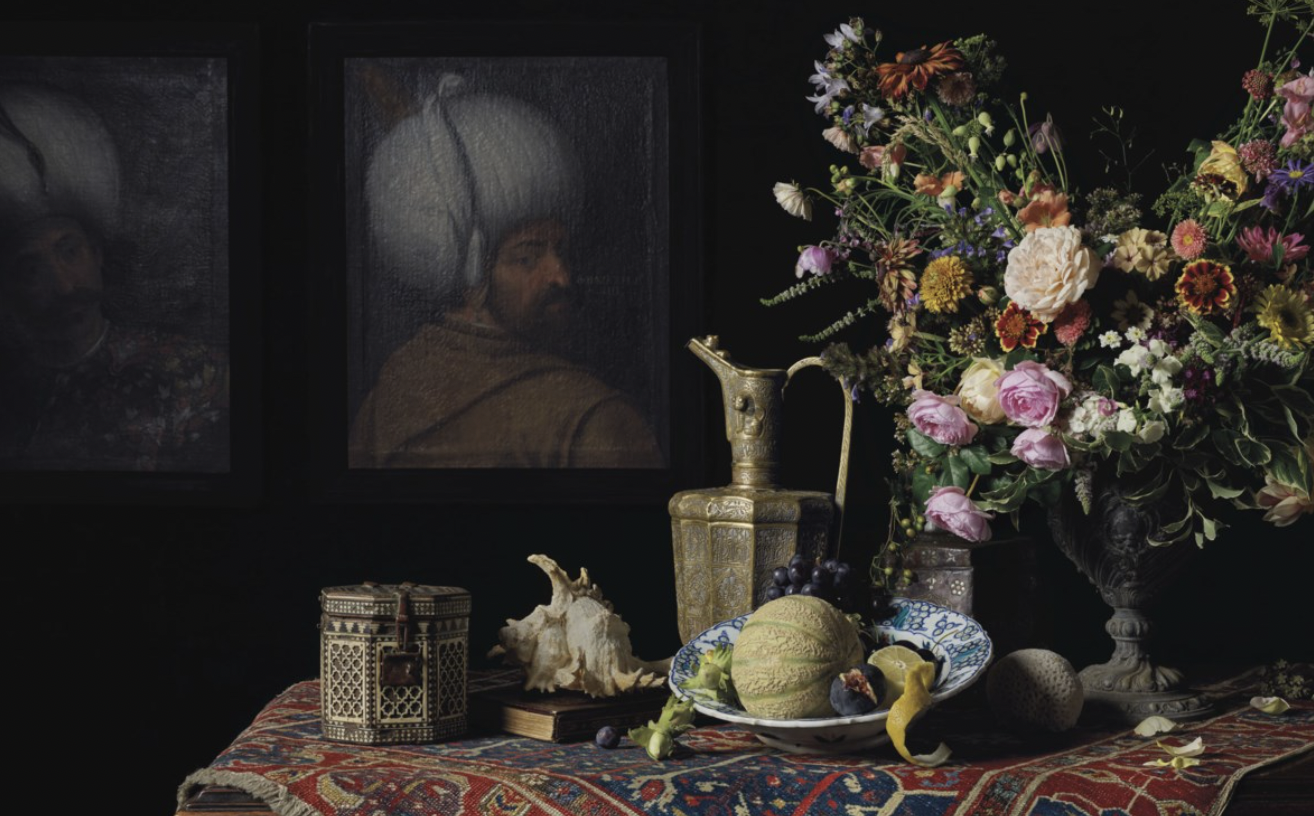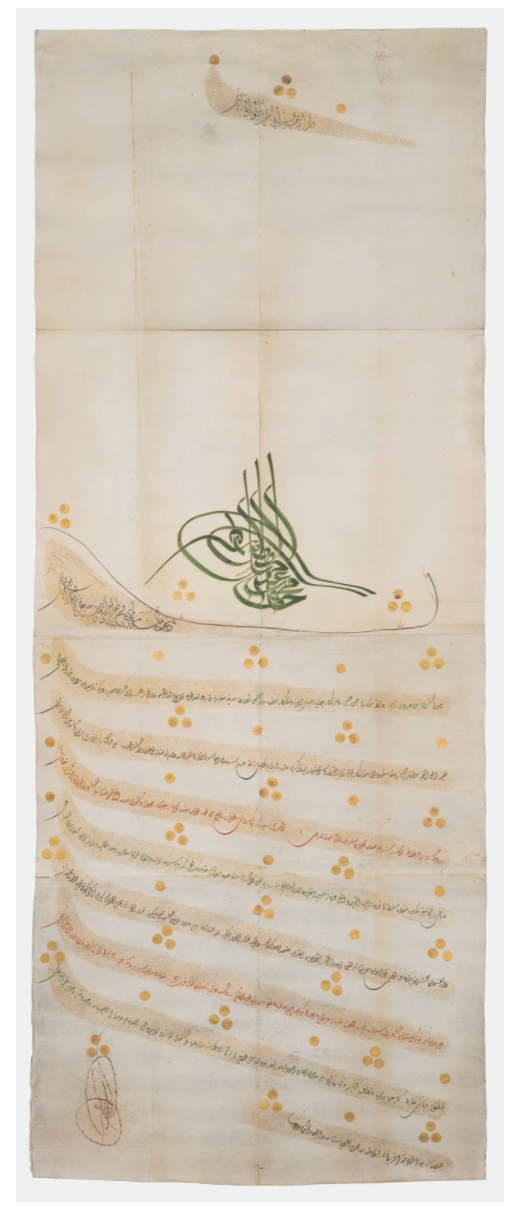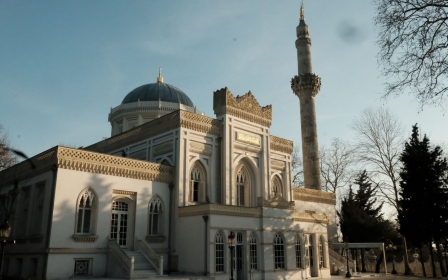
In pictures: Islamic artefacts on display at Christie's in October

A vast collection of artefacts from across the Islamic world will be up for sale at the auction house Christie's on 28 October.
Entitled Art of the Islamic and Indian Worlds, the sale features 216 items including, Ottoman portraits and Indian vases, with guide prices ranging between a few thousand pounds to figures exceeding a million. Those short of the asking prices can view the items in the week leading up to the sale. Most notable among the artefacts are a collection of six portraits of Ottoman sultans, made around the year 1600, which are estimated to sell for a maximum of £1.2m.
Here Middle East Eye looks at some of the other pieces on sale. (All pictures via Christie's).
The Quran manuscript pictured above originates from Timurid Iran and is dated to around 1470. An elegant, cursive variety of Arabic calligraphy named thuluth is used on ivory paper, which is ornately decorated with gold. The thuluth script is known for its use in some of the oldest copies of the Quran.
The Timurid dynasty was a Sunni Muslim clan of Turco-Mongol origin established by Timur (1336-1405), who is also known as Tamerlane in the West. The dynasty ruled much of Central Asia and the Middle East from the 14th century onwards. The Indian Mughal Empire was established by the Timurid prince, Babur.
This manuscript is given an estimated price of £20,000 - £30,000 but is not the most expensive Quran ever sold by the auction house. In 2020, Christie’s sold another Quran from the Timurid dynasty for £7m, ten times its estimate and the highest price ever paid for a Quran manuscript.

In 1893, Qatari forces defeated the Ottomans at the Battle of al-Wajibah. According to Christie’s, the silk Ottoman battle standard was captured by the Qataris during the battle.
The Turks had long claimed the entire Gulf region as part of the Ottoman Empire, but given the region's lack of resources and sparse population, rarely asserted their authority there except during rebellions. Qatar's bedouin tribes, led by the Al Thani family, initially cooperated with the Ottomans. Eventually, though, relations broke down over Istanbul's taxation policies and a revolt began under Sheikh Jassim bin Mohammed Al Thani.
Although the conflict did not result in Qatar’s complete independence, the Ottoman defeat led to greater autonomy and the eventual renunciation of Ottoman claims on the Qatari peninsula. The flag, compromising of three joined panels adorned with various verses of the Quran, has a guide price of between £8000 and £12,000

With a guide price of up to £15,000, this oil on canvas painting depicts the Virgin Mary along with an infant Jesus and two angels. The painting was produced in Qajar Iran in the mid-19th century and is an example of how popular biblical scenes in Iran during the rule of the Turkic dynasty. According to Christie’s, such paintings would have been used to decorate the interiors of houses.

Estimated to sell for up to £25,000, this intricately decorated contraption is an Ottoman-era qibla indicator, made during the 1730s. The qibla is an Arabic term that refers to the direction in which Muslims perform their daily prayers, that is, toward the Holy Kaaba in Mecca’s Grand Mosque. The site is pictured on the interior of the lid.
The base of this Qibla indicator has a world map based on European designs and below it is a list of countries and cities, paired with the coordinates needed to find the direction of the qibla. According to Christie’s, the artefact is signed by Barun al-Mukhtara who created the indicator specifically for the Ottoman grand vizier, Yegen Mehmet Pasha.

A firman is a royal mandate issued by a sovereign in an Islamic state. The one above was distributed by the Ottoman sultan and caliph, Mahmud II, who ruled from 1808 until his death in 1839. The document is addressed to Abdullah Agha, who was the head of endowments of the two holy mosques in Mecca and Medina around 1830. Christie’s has given the firman an estimated price of up to £7,000.
Middle East Eye delivers independent and unrivalled coverage and analysis of the Middle East, North Africa and beyond. To learn more about republishing this content and the associated fees, please fill out this form. More about MEE can be found here.




